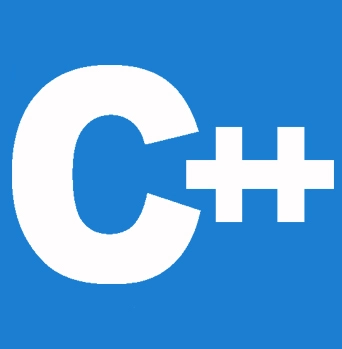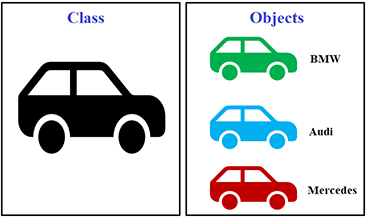Object Oriented Programming concepts in C++
To enhance the object-oriented capabilities of the C language, the C++ programming language was primarily developed. OOPs have many advantages for both users and designers, and they are crucial in many fields, such as user interface design, simulation, modeling and etc. Objective C, Perl, Java, Python, Modula, Ada, Simula, C++, Smalltalk, and certain Common Lisp Object Standard are a few of the popular object-oriented programming languages. You'll learn everything there is to know about C++ object-oriented programming from this tutorial.
What is OOP in C++?
OOP is known as the abbreviation for Object-Oriented Programming.
While object-oriented programming involves creating objects that include both data as well as functions, procedural programming involves developing procedures or functions that can perform operations just on the data.
Compared to procedural programming, object-oriented programming has a number of benefits:
- OOP is quicker and simpler to use.
- OOP gives the programs a very clear structure.
- OOP makes the C++ code easier to maintain, edit, and debug.
- OOP enables the construction of fully reusable applications with less code and faster turnaround times. There is code reuse, which means you don't have to write the same code repeatedly, which will be increasing the program's simplicity. Data hiding is also provided by ideas like encapsulation and abstraction.
OOPs concepts in C++
Object-oriented programming, or OOPs, is a methodology or paradigm of programming in which the focus is on objects rather than functions and logic when structuring a program. It will help to make the code more flexible and modular by dividing the data into two memory locations, namely, the data and the functions.
The fundamental focus of object-oriented programming is on objects that must be manipulated. Data in OOPs can be represented as objects with attributes as well as functions.
Object-oriented programming: Why Do You Need It?
There were a number of limitations with the previous methods of programming, and they were not really good. You couldn't reuse the code in the program, just like in procedural-oriented programming, as well as there is a difficulty with global data access, and the approach couldn't address real-world problems very well.
The use of classes and objects makes code maintenance simple in object-oriented programming. Code reuse, or the ability in order to avoid writing the same code repeatedly, is made possible by inheritance, which will make the program simple. Data hiding can also be accomplished through the use of concepts such as encapsulation and abstraction.
Basic Concepts of Object-Oriented Programming in C++
Some basic concepts that will act as building blocks of OOPs.
- Objects: An object is defined as an entity with a state and behavior, or in other words, anything that exists physically in the world. It can represent a person, a cat, a pen, etc
When data and programs are combined, the result represents an entity and is referred to as an object.
- Classes: A class can be mainly defined as an object's blueprint. Basically, it is a collection of objects that will mainly act as building blocks.
A class has data members (variables) as well as member functions. The data members which are inside the class are manipulated using these member functions.
Difference between an object and Class
An object is considered an instance of a class. A class, that is considered a template for objects.
Every variable and function from the class is inherited by the individual objects when they are created.
In the following tutorial, you will learn a lot more about classes and objects.
- Abstraction: In the process of hiding data, abstraction is helpful. It mainly helps in displaying the very most important aspects by hiding the details and the functionality from the user. Only the portion that the user wants to see is displayed; it avoids all unnecessary as well as irrelevant contents.
- Encapsulation: Encapsulation is the process of combining both data as well as functions into a single unit. To do this, the member function's scope must be made public while the data members' scope must be made private. The data is made inaccessible to the outside world by encapsulation.
- Inheritance: The process of inheritance occurs when two classes have an is-a relationship with one another and objects of the one class acquire the features and properties of the other class. The class from which the characteristics are inherited is referred to as the parent class, and the class from which the features are inherited is known as the child class. For example, Class Bus, Class Car, and Class Bike are examples of child classes, and the Class Vehicle will represent the parent class.
- Polymorphism: Polymorphism is a term denoting many forms. It is a kind of ability in order to take on multiple forms. It is a kind of feature that offers many definitions for a function or an operator. Function overloading, operator overloading, function overriding, and virtual functions can all be used to implement it.
All the basic concepts that act as building blocks of OOPs(class, objects, abstraction, encapsulation, inheritance, and polymorphism will be explained in detail in our coming tutorials.
Advantage of OOP
- We can build programs using standard functioning modules that communicate with one another, rather than constructing the code from the scratch, which saves development time as well as it also increases productivity.
- The OOP language allows you to divide the software/program into bite-sized problems that can be quickly solved (only one object at a time).
- New technology always promises increased programmer efficiency, higher software quality, as well as lower maintenance costs.
- Upgrades to OOP systems are simple for both small and large systems.
- Multiple instances of an object may coexist without interfering with one another.
- It is quite simple to divide work into a project based on objects.
- The program's objects can be mapped to those in the problem domain.
- By using the data hiding concept, programmers can create safety programs that are inaccessible to code from other areas of the program.
- We may remove unnecessary code and increase the functionality of existing classes by using inheritance.
- The data-centered design method allows us to capture additional model details in an implementable format.
Disadvantages for OOP
- OOP-based programs are substantially longer than those created using a procedural method in terms of length. As the program grows in size, it requires more time to execute, resulting in slower program execution.
- Because OOP is not a universal language, we cannot apply it everywhere. It is only used when it is very much necessary. It is not appropriate for all types of issues.
- Using OOP is a little tough, so programmers must have amazing design and programming skills, as well as adequate planning.




